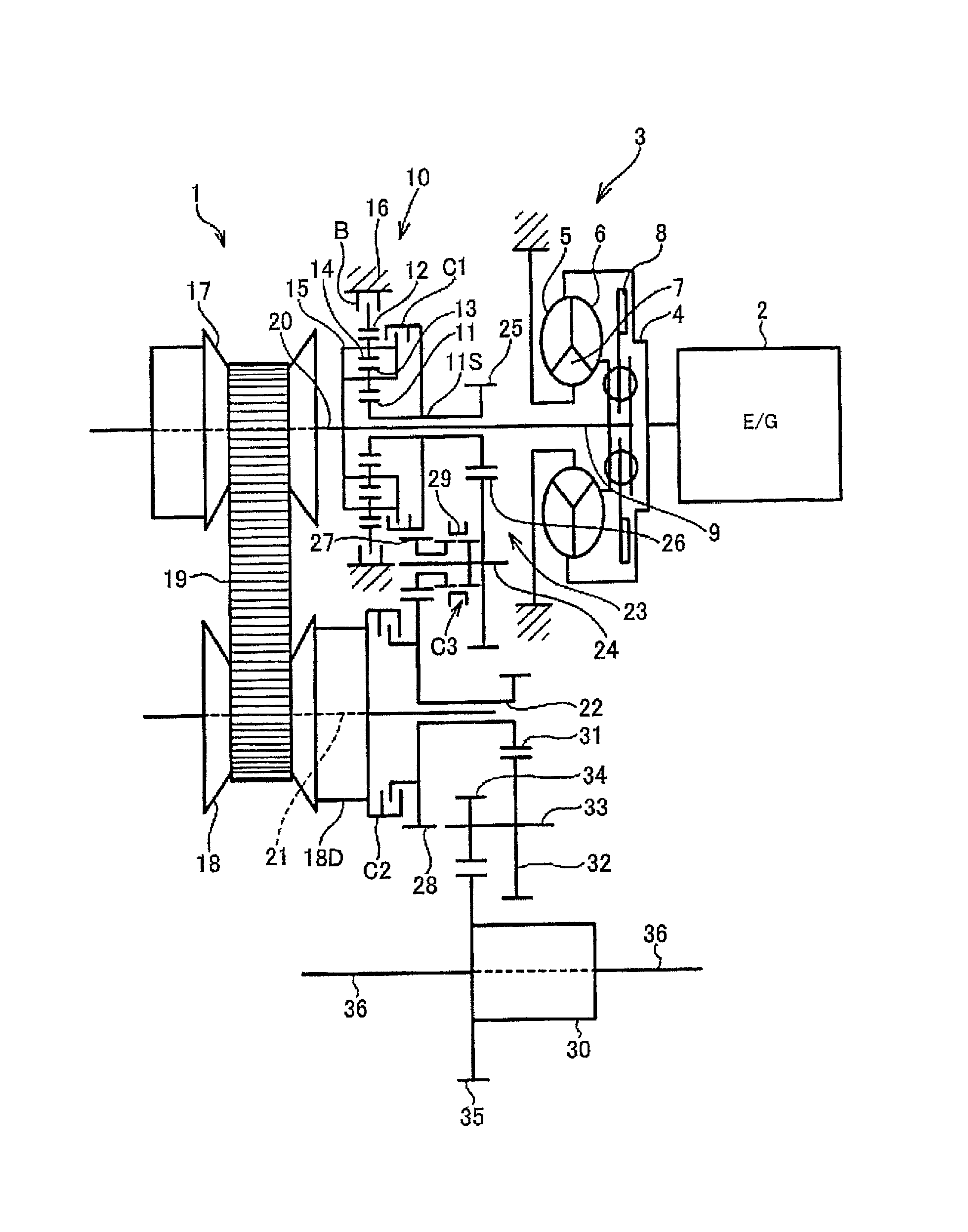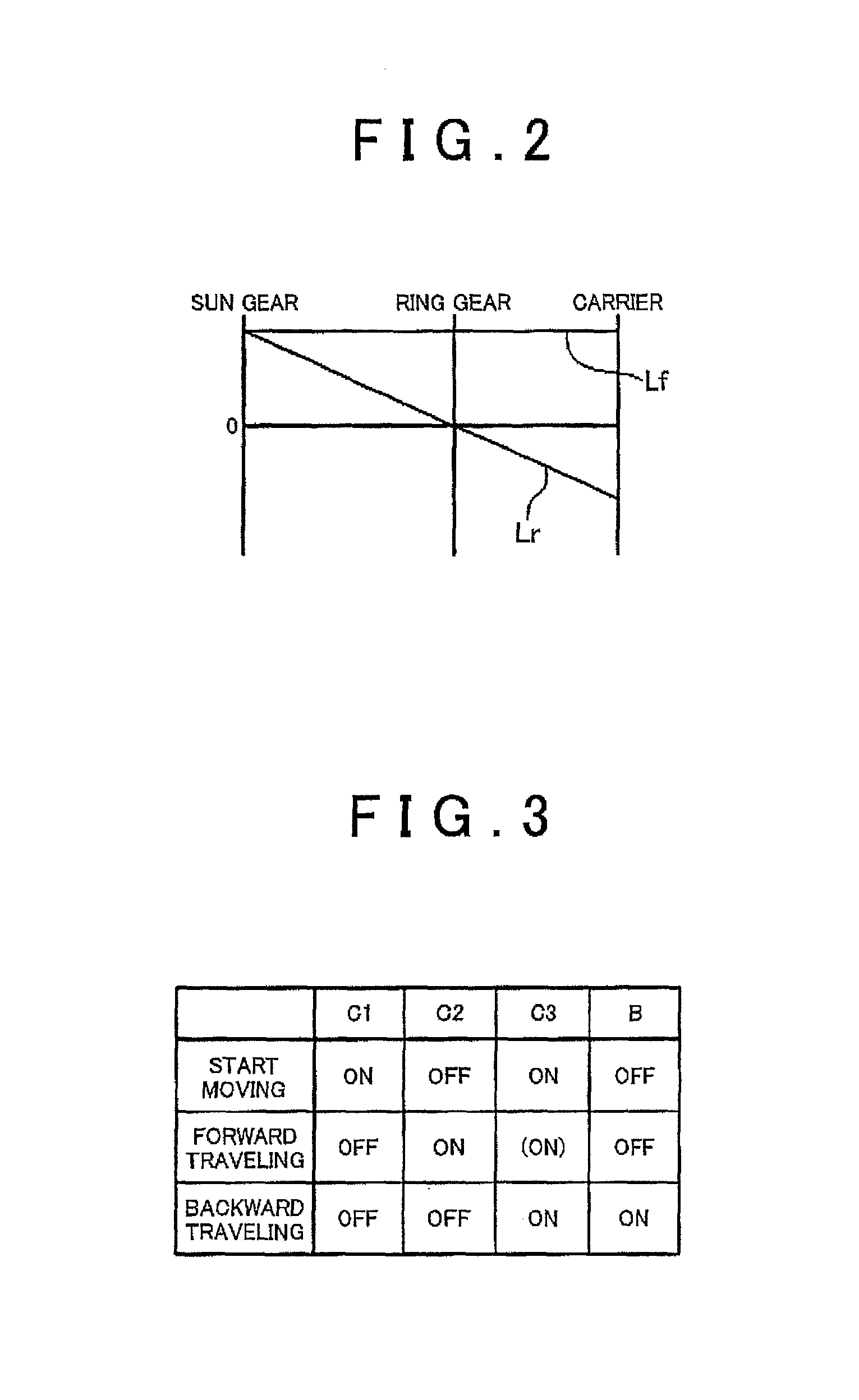Vehicle power transmission device
a technology of transmission device and transmission device, which is applied in the direction of mechanical equipment, transportation and packaging, and transportation of fuel, can solve the problems of reducing affecting the efficiency of the internal combustion engine, and increasing the size of the device, so as to reduce the loss of power, prevent or suppress the shift shock, and increase the speed ratio range
- Summary
- Abstract
- Description
- Claims
- Application Information
AI Technical Summary
Benefits of technology
Problems solved by technology
Method used
Image
Examples
Embodiment Construction
[0046]A power transmission device according to the invention is a device for transmitting power output from a driving force source, such as an engine and a motor, to a drive wheel and is a device having a shift function. That is, the power transmission device is a device generally called a transmission or a transaxle. Particularly, a device intended by the invention is a power transmission device including a continuously variable transmission and a gear train. The continuously variable transmission and the gear train are arranged in parallel with each other between an input shaft and an output shaft. The gear train has a predetermined speed ratio (gear ratio). The continuously variable transmission may be an existing known belt-type continuously variable transmission or toroidal-type continuously variable transmission. The belt-type continuously variable transmission is suitable for a power transmission device that is mounted on a front-engine front-drive vehicle (FF vehicle). The t...
PUM
 Login to View More
Login to View More Abstract
Description
Claims
Application Information
 Login to View More
Login to View More - R&D
- Intellectual Property
- Life Sciences
- Materials
- Tech Scout
- Unparalleled Data Quality
- Higher Quality Content
- 60% Fewer Hallucinations
Browse by: Latest US Patents, China's latest patents, Technical Efficacy Thesaurus, Application Domain, Technology Topic, Popular Technical Reports.
© 2025 PatSnap. All rights reserved.Legal|Privacy policy|Modern Slavery Act Transparency Statement|Sitemap|About US| Contact US: help@patsnap.com



